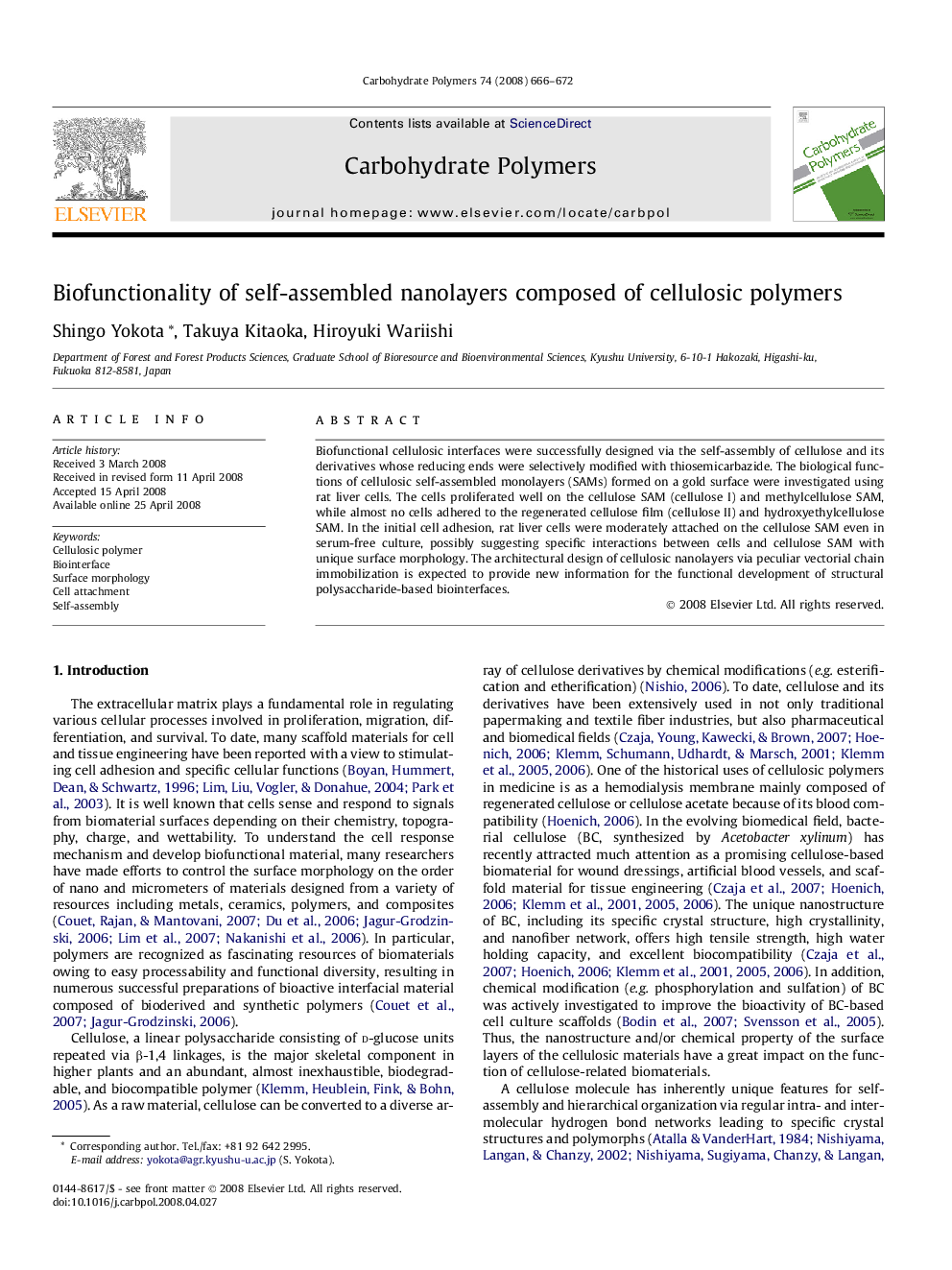| Article ID | Journal | Published Year | Pages | File Type |
|---|---|---|---|---|
| 1386440 | Carbohydrate Polymers | 2008 | 7 Pages |
Biofunctional cellulosic interfaces were successfully designed via the self-assembly of cellulose and its derivatives whose reducing ends were selectively modified with thiosemicarbazide. The biological functions of cellulosic self-assembled monolayers (SAMs) formed on a gold surface were investigated using rat liver cells. The cells proliferated well on the cellulose SAM (cellulose I) and methylcellulose SAM, while almost no cells adhered to the regenerated cellulose film (cellulose II) and hydroxyethylcellulose SAM. In the initial cell adhesion, rat liver cells were moderately attached on the cellulose SAM even in serum-free culture, possibly suggesting specific interactions between cells and cellulose SAM with unique surface morphology. The architectural design of cellulosic nanolayers via peculiar vectorial chain immobilization is expected to provide new information for the functional development of structural polysaccharide-based biointerfaces.
